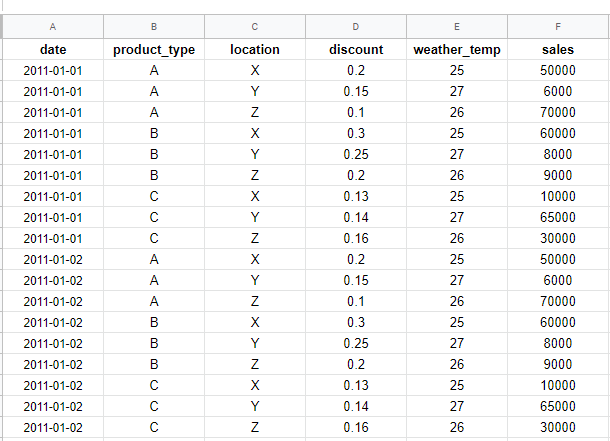@googlebot Hi Alex, thanks for your reply, I was able to solve the problem for multivariate now the problem is solving the grouped data (product category and/or location). I have a problem in understanding how can I implement an embedding layer (especially as I am new to deep learning and PyTorch), What parameters should I pass to the embedding layer (and nn.embedding)? and how the sequence will be alligned with the date?
I will share my code, maybe it is easier to suggest a solution.
Given that my data loading function is as follows:
def sliding_windows(data, seq_length):
x = []
y = []
for i in range(len(data)-seq_length-1):
_x = data[i:(i+seq_length)]
_y = data[i+seq_length]
x.append(_x)
y.append(_y)
return np.array(x),np.array(y)
sc = MinMaxScaler()
training_data = sc.fit_transform(training_set)
seq_length = 4
x, y = sliding_windows(training_data, seq_length)
y = (y[:,0]).reshape(y[:,0].shape[0],1)
train_size = int(len(y) * 0.9)
test_size = len(y) - train_size
dataX = Variable(torch.Tensor(np.array(x)))
dataY = Variable(torch.Tensor(np.array(y)))
trainX = Variable(torch.Tensor(np.array(x[0:train_size])))
trainY = Variable(torch.Tensor(np.array(y[0:train_size])))
testX = Variable(torch.Tensor(np.array(x[train_size:len(x)])))
testY = Variable(torch.Tensor(np.array(y[train_size:len(y)])))
and the model is as follows:
class LSTM(nn.Module):
def __init__(self, num_classes, input_size, hidden_size, num_layers):
super(LSTM, self).__init__()
self.num_classes = num_classes
self.num_layers = num_layers
self.input_size = input_size
self.hidden_size = hidden_size
self.seq_length = seq_length
self.lstm = nn.LSTM(input_size=input_size, hidden_size=hidden_size,
num_layers=num_layers, batch_first=True)
self.fc = nn.Linear(hidden_size, num_classes)
def forward(self, x):
h_0 = Variable(torch.zeros(
self.num_layers, x.size(0), self.hidden_size))
c_0 = Variable(torch.zeros(
self.num_layers, x.size(0), self.hidden_size))
# Propagate input through LSTM
ula, (h_out, _) = self.lstm(x, (h_0, c_0))
h_out = h_out.view(-1, self.hidden_size)
out = self.fc(h_out)
return out
and finally the training loop is as follows:
num_epochs = 1000
learning_rate = 0.008
input_size = 4
hidden_size = 4
num_layers = 1
num_classes = 1
lstm = LSTM(num_classes, input_size, hidden_size, num_layers)
criterion = torch.nn.MSELoss() # mean-squared error for regression
optimizer = torch.optim.Adam(lstm.parameters(), lr=learning_rate,weight_decay=0.001)
# Weight_decay to decay the errors == regularization technique
# optimizer = torch.optim.SGD(lstm.parameters(), lr=learning_rate)
# Train the model
for epoch in range(num_epochs):
outputs = lstm(trainX)
optimizer.zero_grad()
# obtain the loss function
loss = criterion(outputs, trainY)
loss.backward()
optimizer.step()
if epoch % 100 == 0:
print("Epoch: %d, loss: %1.5f" % (epoch, loss.item()))
and what should I do for the prediction part regarding the embedding, should I do something as well?
many thanks in advance
